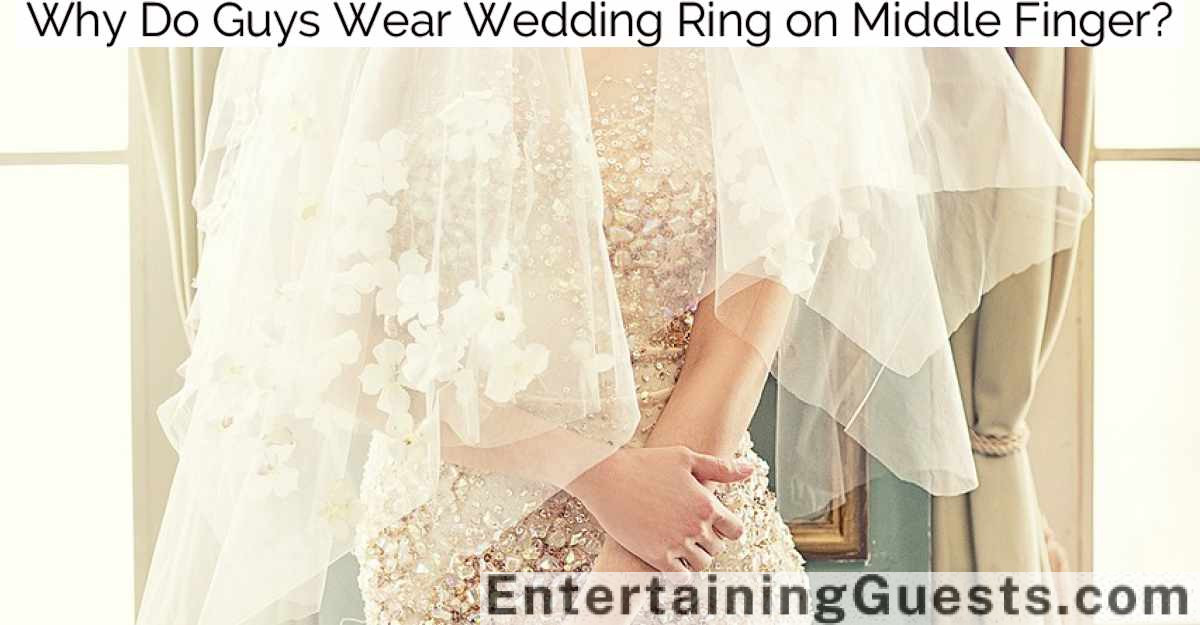For guys searching for the perfect wedding band, five top materials stand out due to their unique properties and advantages. Gold, a classic choice, offers durability and minimal maintenance with a traditional appeal. Platinum ranks high for its dense, hypoallergenic nature, symbolizing a robust, everlasting commitment. Tungsten’s extreme hardness guarantees scratch resistance and a modern look. Titanium, known for its light weight and strength, suits an active lifestyle while being gentle on sensitive skin. Finally, silver provides a stylish yet affordable option, though it requires more upkeep. Each material presents distinct benefits tailored to different priorities and lifestyles, revealing further nuances upon closer exploration.
Key Takeaways
- Gold offers a classic and traditional choice with minimal maintenance and durability against tarnishing.
- Platinum is luxurious, hypoallergenic, and maintains its color without re-plating, symbolizing enduring commitment.
- Tungsten is highly durable and scratch-resistant, ideal for modern aesthetics and active lifestyles.
- Titanium is lightweight, extremely strong, and hypoallergenic, making it comfortable for daily wear.
- Silver provides an affordable option with a lustrous finish and diverse design possibilities, though it requires regular maintenance.
1. Gold: The Classic Choice
Gold, symbolizing both prosperity and tradition, remains the quintessential choice for men’s wedding bands. Its allure isn’t just rooted in aesthetics; gold’s malleability makes it ideal for crafting intricate designs that are as durable as they are beautiful. Unlike harder metals, gold resists most forms of tarnishing and corrosion, ensuring a lasting sheen that can survive the daily wear and tear of life. Additionally, wearing a gold wedding band can signify social status and commitment, aligning with the symbolism and cultural significance associated with wedding rings.
When selecting a gold wedding band, it’s essential to understand the different purities available. Pure gold, known as 24-karat, is often too soft for a durable wedding band, which leads jewelers to commonly use 14-karat and 18-karat gold. These versions are alloyed with metals like copper and zinc, enhancing their strength and lending various color tones such as rose gold or white gold, each adding a unique twist to the classic gold appearance.
The weight of gold is another significant factor. Gold is denser than many other metals used in jewelry, giving it a satisfying heftiness that many find reassuring—a tangible symbol of the weight and permanence of the commitment it represents. However, this density means that gold bands can be heavier than those made from lighter metals, which might affect comfort for some wearers.
In terms of care, gold bands require minimal maintenance. Regular cleaning with a soft cloth and mild soap will maintain its luster without the need for harsh chemicals or frequent professional servicing. This ease of care, combined with gold’s enduring appeal and versatile aesthetics, solidifies its status as a top choice for men’s wedding bands.
2. Platinum: Luxurious and Durable
While gold has historically dominated wedding band preferences, platinum emerges as a superior contender for those seeking a blend of luxury and unmatched durability. This metal’s unique properties not only guarantee a lasting sheen but also offer exceptional resistance to wear and tear, making it an ideal choice for wedding bands that symbolize enduring commitment, much like the traditional significance associated with the ring finger in various cultures.
Platinum stands out due to several key characteristics:
- Density and Weight: Platinum is considerably denser than gold, lending a substantial, weighty feel to a wedding band. This density contributes to its durability and resistance to physical deformation.
- Color Retention: Unlike other metals that may tarnish or lose their luster, platinum maintains its natural white color over time. This feature eliminates the need for re-plating, commonly required for white gold items.
- Hypoallergenic Properties: Platinum is highly recommended for those with sensitive skin, as it is naturally hypoallergenic. Unlike many other metals, platinum does not cause allergic reactions, making it a safe choice for daily wear.
- Rarity and Purity: Typically crafted with 95% pure platinum, this material is more rare than gold, adding to its exclusivity and allure as a symbol of a significant life milestone.
The technical superiority of platinum in crafting wedding bands cannot be overstated. Its durability guarantees that the band can withstand daily wear without diminishing in appearance, representing an everlasting bond. Consequently, for those valuing both aesthetics and resilience, platinum proves to be an unmatched choice in wedding band materials.
3. Tungsten: Modern and Tough
Why choose tungsten for a wedding band? Tungsten, derived from the Swedish words “tung sten,” meaning “heavy stone,” epitomizes strength and endurance. This metal’s impressive hardness, second only to diamond, guarantees that it withstands the rigors of daily wear without losing its polished look. Wedding rings symbolize eternal love and commitment, and tungsten’s durability aligns perfectly with this sentiment, serving as a symbol of resilience required in marriage. Tungsten carbide, an alloy made by combining equal parts tungsten and carbon atoms, boasts a Mohs hardness rating of about 8 to 9, making it highly scratch-resistant.
Tungsten’s substantial weight contributes to its appeal as a wedding band material for those who appreciate a more solid, hefty feel. Its density and toughness translate to a piece of jewelry that feels robust and masculine. Additionally, tungsten bands maintain their finish over time, resisting scratches and abrasion, which are common in softer metals.
The color of tungsten carbide is another significant attribute. It typically displays a sleek, gunmetal grey finish, but advanced manufacturing techniques allow for a variety of hues, including black, white, and even gold-toned coatings. These coatings are achieved through processes such as physical vapor deposition (PVD), which enhances the band’s resistance to tarnishing and further increases its durability.
Tungsten’s thermal conductivity is lower than that of other metals used in jewelry, which means it feels cooler against the skin—an advantage in warmer climates or for individuals whose skin may react to heat.
4. Titanium: Lightweight and Hypoallergenic
Titanium sets itself apart as an exceptionally lightweight and hypoallergenic option for wedding bands. Known for its strength and durability, titanium offers a modern aesthetic that appeals to many grooms. Its lightweight nature ensures that the band is comfortable to wear daily without straining the finger. Furthermore, as a hypoallergenic material, it is an ideal choice for those with sensitive skin or metallic allergies.
To understand why titanium is a top choice for wedding bands, consider the following attributes:
- Weight: Titanium is significantly lighter than most metals used in jewelry, making it ideal for those who are not accustomed to wearing rings.
- Strength: Despite its light weight, titanium is extraordinarily strong and resists bending or scratching, maintaining its form and finish over time.
- Corrosion Resistance: It does not corrode, rust, or lose its color when exposed to saltwater or human sweat, an essential quality for longevity.
- Biocompatibility: Titanium is non-toxic and compatible with the human body, which prevents irritation or allergic reactions.
Each of these characteristics ensures that titanium not only holds up well under daily wear but also maintains its appearance without special care. This makes titanium not just a practical choice for wedding bands but also a smart investment in long-lasting, trouble-free jewelry. With its sleek, contemporary look, titanium continues to grow in popularity among those seeking a stylish yet durable alternative in wedding band materials.
5. Silver: Affordable and Stylish
Silver offers an attractive combination of affordability and style, making it a popular choice for wedding bands. Its lustrous finish and timeless appeal, coupled with a lower price point than gold or platinum, allow for a wide range of designs that cater to varying tastes without breaking the bank. Additionally, silver’s malleability means it can be crafted into intricate patterns that are ideal for those who appreciate detailed craftsmanship.
However, silver does require more maintenance than other metals due to its tendency to tarnish. Regular polishing and proper storage are essential to maintain its shine and prevent oxidation. The metal’s softer nature also makes it more susceptible to scratches and dents, which could be a consideration for those with active lifestyles.
For those considering silver as their wedding band material, here is a detailed comparison:
| Feature | Details |
|---|---|
| Affordability | Noticeably less expensive than gold or platinum. |
| Style Options | Wide range available, from classic to intricate designs. |
| Maintenance | Requires regular polishing to prevent tarnish. |
| Durability | Softer metal, prone to scratches and deformation. |
| Hypoallergenic | Generally safe, but can cause reactions in very rare cases. |
Frequently Asked Questions
How Do I Measure Ring Size Accurately at Home?
To measure ring size accurately at home, one should use a flexible measuring tape or a strip of paper. Wrap it around the base of the intended finger, mark where it overlaps, then lay it flat against a ruler to measure the length in millimeters. For the most precise results, it’s best to measure the finger at room temperature and avoid measuring when the hands are cold, as fingers can shrink.
Can Wedding Bands Be Resized Easily?
Wedding bands can often be resized, but the ease and feasibility depend on the material and design of the ring. Metals like gold, silver, and platinum are typically more malleable, allowing jewelers to adjust the size without much difficulty. However, bands made from harder materials such as tungsten or titanium might not be resizable. Additionally, rings with intricate patterns or stones set around the band might pose challenges during resizing.
What Are Conflict-Free Materials for Wedding Bands?
When considering conflict-free materials for wedding bands, it’s crucial to focus on ethically sourced options. Lab-grown diamonds and recycled metals like gold and platinum are top choices. They guarantee minimal environmental impact and ethical labor practices. Companies certified by the Responsible Jewellery Council offer additional reassurance of sustainability. Opting for these materials supports eco-friendly initiatives and promotes human rights, making them an ideal choice for socially conscious individuals.
How Should a Wedding Band Fit?
A wedding band should fit snugly around the finger, allowing enough room to slide over the knuckle without discomfort. It shouldn’t be too tight, causing irritation or difficulty in removal, nor too loose, risking it sliding off. Ideally, there’s a slight resistance when passing over the knuckle, ensuring the ring stays securely in place. Proper sizing is essential, as daily activities and temperature changes can affect finger size.
Are There Eco-Friendly Options for Wedding Bands?
Yes, several eco-friendly options for wedding bands are available. Manufacturers often use recycled metals, such as gold and platinum, to reduce environmental impact. Additionally, lab-grown diamonds and gemstones provide a sustainable alternative to mined stones, avoiding the significant ecological damage caused by traditional mining practices. Some jewelers also offer bands crafted from renewable materials like bamboo or wood, which are not only sustainable but also unique in appearance.
Conclusion
Ultimately, selecting the ideal wedding band material hinges on balancing aesthetics, durability, and comfort. Gold remains a timeless option, exuding classic elegance. Platinum offers unmatched durability and a luxurious feel, suitable for those seeking long-lasting wear. Tungsten’s robustness appeals to the modern groom, while titanium stands out for its lightweight and hypoallergenic properties. For budget-conscious buyers, silver provides a stylish yet affordable alternative. Each material brings distinct advantages, ensuring there’s a perfect ring for every preference.




